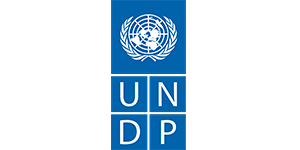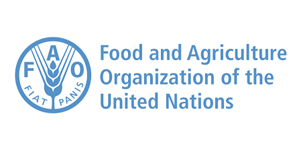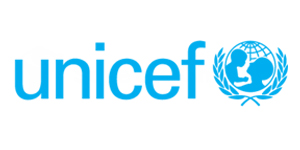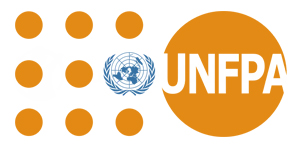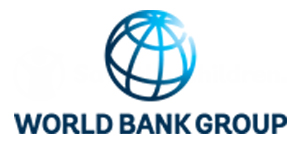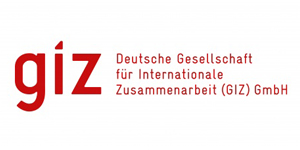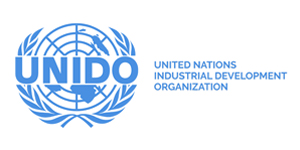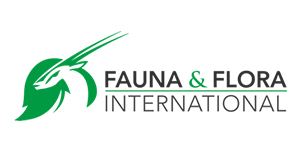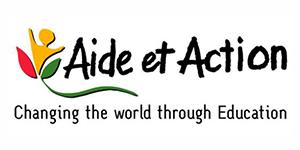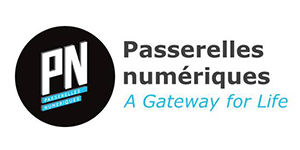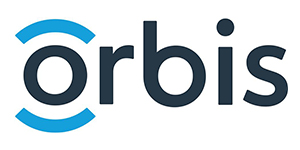BACKGROUND
National Debris Management Advisor
- Project Title
Support to Recovery and Building-Resilience in Typhoon Rai (Odette) Affected Areas in the Philippines
- Overview
Super Typhoon Rai, locally known as Odette, brought torrential rains, violent winds, mudslides, floods and storm surges to central-southern Philippines, specifically the Visayas and Mindanao Islands, with maximum sustained winds of 195km/h and gustiness of 260km/h in the afternoon of 16 December 2021. Rai exited the Philippines Area of Responsibility on 18 December as the strongest storm to hit Mindanao in 10 years and the third ever strongest recorded storm in the Northern Hemisphere.
The Typhoon affected an estimated 16 million people in six of the Philippines 17 regions, leaving about 2.4 million people in need of assistance. According to the National Disaster Risk Reduction and Management Council (NDRRMC) and the Department of Social Welfare and Development (DSWD), it killed at least 177 people, injuring 275 people and displacing 652,000 people as of 22 December. The number of casualties, injured and displaced people is expected to increase as debris clearing progresses, communication and electricity are re-established and isolated areas are reached.
Initial rapid assessments suggest that communities in the provinces of Agusan del Norte, Dinagat Islands, Surigao del Norte, Surigao del Sur, Leyte and Southern Leyte bore the brunt of the Typhoon. Across the six provinces, where up to 46 per cent of people live below the poverty line, at least 1.1 million people are affected and at least 80,000 houses destroyed/damaged.
The typhoon compromised access to safe water and sanitation facilities, heightening the risk of communicable disease outbreaks. The affected people are now subsisting on springs and hand pumps for water, many of which are reported to have been contaminated by flood and sea waters. Many families whose homes have been totally or partially destroyed are reported to lack access to adequate sanitation and hygiene facilities and materials. Those in evacuation centers –many of them schools –are living in congested conditions with limited access to adequate WASH facilities that meet COVID-19 health standards.
The Government invited humanitarian partners based in the country to respond. On 19 December 2021, the Secretary of National Defense conveyed the government’s acceptance of offer of assistance by the UN. This offer of assistance includes information management, coordination/facilitation of international assistance, and the conduct of coordinated rapid needs assessment, and rapid support. The Secretary of Foreign Affairs likewise called on the UN to complement and augment the relief efforts of government to address the needs of the people in most affected areas.
The UNDP is responding to the evolving situation through mobilization of Consultants and funding support for coordination and seed funding for programmatic activities. In this regard, the Country Office will be engaging a Debris Management Advisor to develop and implement a Debris Management Strategy. Within this framework, UNDP plans to design and implement jointly with the government a Debris Management Programme that will comprise one or several integrated projects.
DUTIES AND RESPONSIBILITIES
- Objectives and Scope of Work
The primary function of Debris Management Advisor will be for the design and development of a Debris Management Strategy. Where relevant, UNDP will also support the National and local government authorities to strengthen overall capacity to manage solid waste, which may be mixed with debris or significantly increased in volume for instance as a result of large influx of displaced population groups and/or due to weakened capacity of local authorities. This integrated approach to debris and solid waste management covers all dimensions of debris management, including capacity development and/ or support to national governments with the development of national frameworks, (rubble) removal, re-use, recycle and processing, contributing to livelihoods recovery and the reactivation of the local economy through support to micro enterprises, support to affected communities and work with women as partners and beneficiaries. Both debris and solid waste management can be time critical and life-saving, amongst others to reduce risk of outbreak of vector borne diseases as well as providing access for humanitarian partners to essential sites.
Specifically, the Debris Management Advisor will work on the following:
- Conduct an assessment of the recovery needs in the area of debris management, including livelihoods opportunities related to recycling and re-use of materials. As needed, the assessment will also address solid waste management specific needs for support;
- Assess the scope of infrastructural damage, the mapping of the area and the volume of rubble to be removed;
- Assess the impact of the crisis on capacities on solid waste management as well as the composition and volumes of waste;
- Analyze the state of public infrastructure, including landfills and dumping sites for debris solid waste management and the accessibility to them by different kind of vehicles and machinery.
- Prepare a rapid technical assessment of buildings and housing using local technical capacities, when possible and available
- Review existing capacities for removal, sorting and recycling in the country and region.
- Establish priorities for the areas of debris removal, disposal and recycling, in conjunction with other actors in the post disaster cluster.
- Identify any institutional capacities, policy and legislation that may affect the rubble removal process (including different status for disposal of debris.
- Ensure that women and girls’ needs and priorities are separately assessed and that gender dimensions are adequately reflected in the overall assessment.
- Develop a programme strategy for recovery & debris management as part of a wider recovery framework including the promotion of both immediate as well as medium to longer term livelihoods initiatives.
- Consider the possibility of recycling and reusing debris as an input for construction for: roadbeds, housing, landfills, embankments, etc.
- Consider the possibility of recycling solid waste as an input for livelihoods opportunities, including recycling and re-use
- Consider specific activities that can be carried out by women/how to adapt some of those activities to the specific needs of women.
- Select appropriate technology for debris and solid waste removal and recycling, creating skills in the CfW programmes that can lead to sustainable jobs, SMEs, and performance criteria, during the economic recovery phase.
- Present the preliminary Programme Strategy at a Validation and Consensus building workshop to ensure participation and ownership from different stakeholders and beneficiaries.
- Develop one or several project concepts (s), either for debris management, solid waste management, removal and recycling of rubble, as a stand-alone project or as the component of a wider recovery programme
- Design a results framework that comprises the a) safe removal, disposal and re-use of debris and/or solid waste, b) Creation of temporary employment schemes as transition to the economic revitalization; c) strengthening of local institutional capacities in the area of debris management and solid waste management as needed; and d) design of an effective management structure for the programme/projects.
- Design and budget / program for the project execution with a monitoring and evaluation plan.
- Ensure local and national ownership as well as NGOs to develop their capacity and support for national ownership of the reconstruction process in a sustainable manner, addressing disaster and environmental risks.
- Support community empowerment and participation by engaging community bodies and other key stakeholders, including women’s grassroots organizations.
- Provide inputs to the and ensure cohesion between debris management activities and general (early) recovery initiatives, including livelihoods, local governance and social cohesion.
- Outputs and Deliverables
Note: 1 workday = 8 hours
- Governance and Accountability
- Overall direction and guidance shall be provided by the UNDP Team Leader for Climate Action Programme while day-to-day supervision shall be performed by the UNDP Recovery and Resilience-building Project Manager, with whom all outputs shall be submitted and through whom all communications shall be course or copied.
- Though the National Debris Management Advisor’s outputs and deliverables shall be reviewed, quality assured, and accepted in consultation with the consortium or its key members, this contract is executed and managed under the operations policies and procedures of UNDP. The Recovery and Resilience-building Project Manager shall formally accept outputs and cause the processing of payments.
- The National Debris Management Advisor is expected to provide his/her own laptop for the work requirement. S/he will be provided with desk space and access to office facilities and equipment, if available. S/he will also be supported by UNDP staff for administrative and logistic requirements, as necessary.
- Duration of Work
To undertake the tasks and deliver the expected outputs, the National Debris Management Advisor shall be engaged for a period of 45 workdays spread over 4.5 months with 20 days of duty travel in other part of the Philippines. Effectivity of the engagement will be upon signing of the contract and will be valid until all outputs have been delivered and accepted. The target start-of-work date is 15 March 2022 and the expected completion date is 31 July 2022.
- Duty Station
- The National Debris Management Advisor will be deployed in Typhoon Rai affected areas for the on-site activities as permitted by IATF guidelines on travel and entry in these provinces and will be called upon to report to UNDP, whether physically or virtually for implementation updates.
- For accessibility and availability to allow for discussions and reporting on the progress of activities, regular online meetings shall be conducted.
- In light of the COVID-19 pandemic and declaration of State of Public Health Emergency in the Philippines, all work and travel of the National Debris Management Advisor shall be done within the guidelines and protocols set by the local and national government
- The National Debris Management Advisor will not be required to report to office regularly but status report on the outputs shall be expected from time to time.
COMPETENCIES
- Competency Requirements
| Corporate |
|
| Technical/Functional |
|
| Managerial |
|
| Behaviour |
|
| Job Knowledge and Expertise |
|
REQUIRED SKILLS AND EXPERIENCE
- Qualifications of the Consultant
The minimum qualifications of the National Debris Management Advisor are as follows:
Education:
Advanced university degree in Engineering (industrial, civil, etc), Environmental Planning; Land Use Planning; international studies or discipline relevant to disaster risk reduction;
Experience:
- Must have at least seven (7) years’ experience in programme development focusing on Debris Management, Solid Waste Management in challenging environments and in post-disaster context;
- Knowledge of the international disaster reduction system and the country's hazards, vulnerabilities and risks;
- With at least three (3) years’ experience in coordinating with national and local government agencies.
- Experience in procurement, project design, execution and financing with UNDP and IFIs will be considered as an asset.
Language:
Fluency in English required; fluency in one or more official UN languages or the working language of the duty station is desirable.
Other Skills:
Qualifications and / or industry certification and /or demonstrable experience in the following applications: Microsoft Office
- Scope of Price Proposal and Schedule of Payments
- The National Debris Management Advisor should send the financial proposal based on a lump-sum amount for the delivery of the outputs identified in Sections D. The total amount quoted shall include all costs components required to deliver the services identified above, including professional fees (daily fee X number of person-days) and any other applicable costs such as health insurance, Covid test results prior to the field work, communications, transportation, and accommodation, etc. Travel, as deemed relevant by UNDP and compliant with government guidelines on community quarantine, will be arranged and paid for by UNDP and should not be included in the financial proposal.
- Medical/health insurance must be purchased by the individual at his/her own expense, and upon award of contract, the contractor must be ready to submit proof of insurance valid during contract duration.
- The contract price will be fixed output-based price. Any deviations from the output and timelines will be agreed upon between the Contractor and UNDP.
- Payments will be done upon satisfactory completion of the deliverables by target due dates. Outputs will be reviewed and certified by the Team Leader, Climate Action Programme, UNDP prior to release of payments as follows:
- Recommended Presentation of the Offer
The National Debris Management Advisor shall be jointly selected and agreed upon by UNDP. The prospective National Debris Management Advisor(s) shall provide the following:
- Duly accomplished Letter of Confirmation of Interest and Availability using the template provided by UNDP;
- Personal CV or P11, indicating all past experience from similar projects, as well as the contact details (email and telephone number) of the Candidate and at least three (3) professional references. The applicant must indicate specifically his/her role in the aforementioned experiences, e.g, Team leader, team member, Lead researcher, etc. below is a proposed format to be provided, as well as the contact details (email and telephone number) of the candidate and at least three (3) professional references; and
| Activity Conducted/ Project Name | Date Completed | Role in Activity | Client for whom output is intended |
| e.g. CLUP development for LGU x | Dec. 2016 | Team Lead | HLURB |
- Financial Proposal that indicates the all-inclusive fixed total contract price, supported by a breakdown of costs, as per template provided. If an Offeror is employed by an organization/company/institution, and he/she expects his/her employer to charge a management fee in the process of releasing him/her to UNDP under Reimbursable Loan Agreement (RLA), the Offeror must indicate at this point, and ensure that all such costs are duly incorporated in the financial proposal submitted to UNDP.
- Criteria for Selection of the Best Offer
The Offers received will be evaluated using a combined scoring method - where technical proposal will be weighted 70 points and combined with the price offer which will be weighted 30 points.
The CV will be reviewed using the criteria in the table below. Only offerors who will obtain a minimum of 70% or 49 out of 70 obtainable points will be shortlisted and considered for evaluation of financial proposal.
|
|
Max obtainable points |
|---|---|
| Advanced university degree in Engineering (industrial, civil, etc), Environmental Planning; Land Use Planning; international studies or discipline relevant to disaster risk reduction 7 points for an advanced university degree; 1 point for additional degree and additional 1 point for certification for a maximum of 10 points. | 10 |
| Must have at least seven (7) years’ experience in programme development focusing on Debris Management, Solid Waste Management in challenging environments and in post-disaster context. 21 points for seven (7) years; 3 points for an additional year for a maximum of 30 points. | 30 |
| Knowledge of the international disaster reduction system and the country's hazards, vulnerabilities, and risks. | 10 |
| With at least three (3) years’ experience in coordinating with national and local government agencies. 14 points for three (3) years' experience; 2 points for an additional year for a maximum of 20 points. | 20 |
| TOTAL | 70 |
Offerors must upload in one (1) file the documents mentioned above.
Templates for a) P11 Personal History Form and b) Offeror's Letter to UNDP Confirming Interest and Availability and Financial Proposal (Annex 2) are available through the link below. UNDP General Terms and Conditions for Individual Contractors are also available:
http://gofile.me/292aN/FJEcICt8l
Incomplete submission of required documents may result in disqualification.
Please see the deadline of submissions above.
Because of the volume of applications UNDP receives, only shortlisted offerors will be notified.
-
Việc làm tại các tổ chức phi chính phủ - NGO Recruitment
- Website: https://ngorecruitment.org/
- Instagram: https://www.instagram.com/ngorecruitment_vn
- LinkedIn: https://www.linkedin.com/in/ngorecruitment
- Group: https://www.facebook.com/groups/VieclamPhichinhphu
- Youtube: http://bit.ly/Youtube_NGORecruitment


